“Queen Charlotte” and the Genius of Shonda Rhimes
It isn’t easy to be entertaining, moving, and culturally subversive all at the same time. Shonda Rhimes has been doing it since “Grey’s Anatomy”—and “Queen Charlotte” is her latest.
“Dearest gentle reader. This is the story of Queen Charlotte from Bridgerton. It is not a history lesson. It is fiction inspired by fact. All liberties taken by the author are quite intentional. Enjoy.”
(Lady Whistledown)
But first, a word or two about “Grey’s Anatomy.” And the “culture wars.” And Anne Boleyn…
Unlike most viewers, I didn’t get hooked on “Grey’s” until several seasons had passed. I thought it was going to be a generic hospital show, and I had seen just about every one of those from the most superficial (Dr. Kildare, Ben Casey, Marcus Welby, MD) to the quirkier ones that I loved (St. Elsewhere and House). And in many ways, Grey’s Anatomy is a conventional women’s show, with story lines centered on romantic turmoil and ambivalence and located in a hospital that has a new crisis every week.
But Shonda Rhimes made these concessions to convention (which, after all, would not be reproduced so often if they weren’t satisfying to viewers) while subverting other expectations of the doctor show genre. St. Elsewhere had Denzel Washington (sadly, rarely featured); ER had Eriq Le Salle, a surly token surgeon. Grey has a genuinely diverse cast, including a very short Black woman, a full-bodied Latina, and a dour-looking Asian. This may seem like a big yawn now, with shows like The Good Fight located in a Black law firm, but this was 2007, and Grey broke what until then was the mold: not everyone was drop-dead gorgeous and being non-white was unexceptional. The chief of surgery was a Black male (James Pickens Jr.)—and later, a Black female. The show was narrated by Meredith, whose friendship with another woman, Christina Yang (Sandra Oh, the dour Asian), developed over the course of the first season to be as central, if not more central, than her love life, as they became each other’s “person.” And I loved it that Miranda Bailey (Chandra Wilson)—the first genuinely ordinary-looking woman to have a top role on network TV—did not slide into the background, as I expected at first, but remained a central character (who got a top job and also got herself a gorgeous man, a departure from the stereotype of the chubby lovelorn woman.)
Shonda Rhimes is an expert at combining the progressive (in “Grey,” diverse cast, strong women) and the conventional (plots centered on love affairs or/and disasters) in just the right proportions to win a huge following while inserting subtly subversive elements. The popular “Bridgerton” series broke ground by racially mixing—romantically and class-wise—the matings and hierarchies of a genre (the historical romance) that until then had been Jane Austen white.
At the time the first of the series aired, there wasn’t much protest from the “anti-woke” squad—partly because they hadn’t yet consolidated their forces into an all-out culture war, and partly because Bridgerton seemed like a whimsical one-off. But when other inventions with a more established place in the canon of white fantasy—James Bond, The Little Mermaid—began to be revisioned with Black leads, it was going too far. The Little Mermaid wasn’t Black!! How dare our children be subjected to such a flagrant departure from…what? History?? From the outrage, you’d think the little girl with fins and a tail was a historical personage with actual DNA. Not that these folks have ever been guardians of historical fact, which they’ve been happy to disregard when it might make white children “feel bad about themselves.” Of course, they have had little regard for how the new Little Mermaid makes Black girls feel:
When”wokeness” invaded historical fact—or what was imagined to be historical fact —some historians got huffy too. A Black Anne Boleyn?? (Jodie Turner-Smith) The protests conveniently ignored the fact that we don’t actually know much about what Boleyn looked like, leaving every generation to imagine and reimagine her according to their own contemporary conventions of beauty and fashion. Victorian Anne was plump, blonde, fair-skinned and blue eyed—in total disregard of even the scant information we have from sources from Anne’s time, who describe her as having dark auburn hair and strikingly dark eyes, a slender body with a “bosom not much raised,” and skin “not so whitely” as was desirable at the time. Elizabethan Anne sports a high-necked collar that hadn’t yet come into fashion in Anne’s time. The ravishing, sexually provocative Annes (e.g. Dormer, Portman) are largely a twentieth-century invention—a conversion of her temptress reputation among the Catholics into visual form. The romantics, in contrast, almost always depicted her as shy and flaxen-haired—the visual counterpart to their view of Anne as victim of Henry’s voracious appetite. All our “Annes” are the creation of cultural imagination. ( So, equally, is Anne the witch, six-fingered and jaundiced, with a projecting tooth, large goiter, and covered with disfiguring moles, as her enemies described her.)
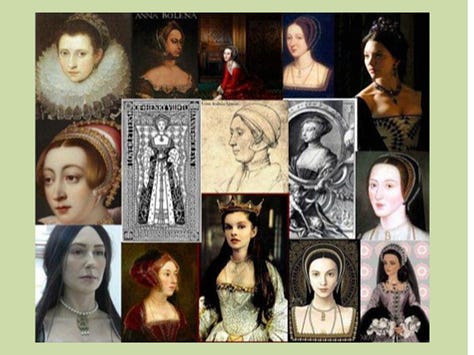
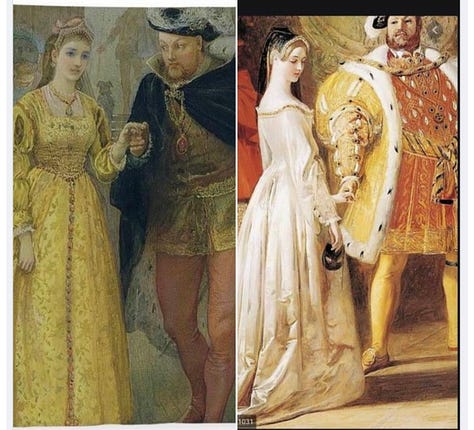

Portraits of Anne are not much help, as they are few and far between (Henry destroyed much of the evidence of her existence when he executed her) and early royal portraits are notoriously guilty of inscribing ideas about a person’s character, position or role into their depictions. The symbolism could include inscriptions, emblems, mottos, relationships with other people, animals, or objects, and it could also be written into the body itself. A famous example is Hans Holbein’s sketch of Henry VIII—the painting itself was destroyed in a fire—with the king posed to emphasize his power, authority, and resoluteness: legs spread and firmly planted, broad shoulders, one hand on his dagger, and a very visible codpiece (larger, art historians have noted, than portraits of other men at the time.) Portraits of Anne and Henry’s daughter Elizabeth I are also full of iconography, meant to establish a “cult of Elizabeth,” with a whole new vocabulary of public symbols, to replace the idolatory of the Virgin Mary that was banned from her officially protestant england.


What Has This Got to Do With “Queen Charlotte”?
I’ve gone into all this as an explanation as to why I’m not going to wade into debates about whether the actual Queen Charlotte was “Black” or not. “Black” has culturally signified in many different ways, and we have no way of knowing which, if any, are appropriate to this time period. We know that Charlotte was of Moorish ancestry, so in that sense she was “Black.” But just how that translated, generations later, into facial features and skin tone that would have marked her in her own time as “other” than the white, European norm is impossible to determine.
Several of her portraits depict her with a broad nose and mouth that have been seen by some historians as evidence of her biologically African morphology. Others depict her differently. It’s difficult to know (as I’ve argued in the case of Anne Boleyn and Henry VIII) how much is artistic projection and iconography. In inscribing her royal status on her body, was Charlotte painted “whiter” than she actually was (something George’s mother Princess Augusta demands be done in the tv series)? We simply don’t know.

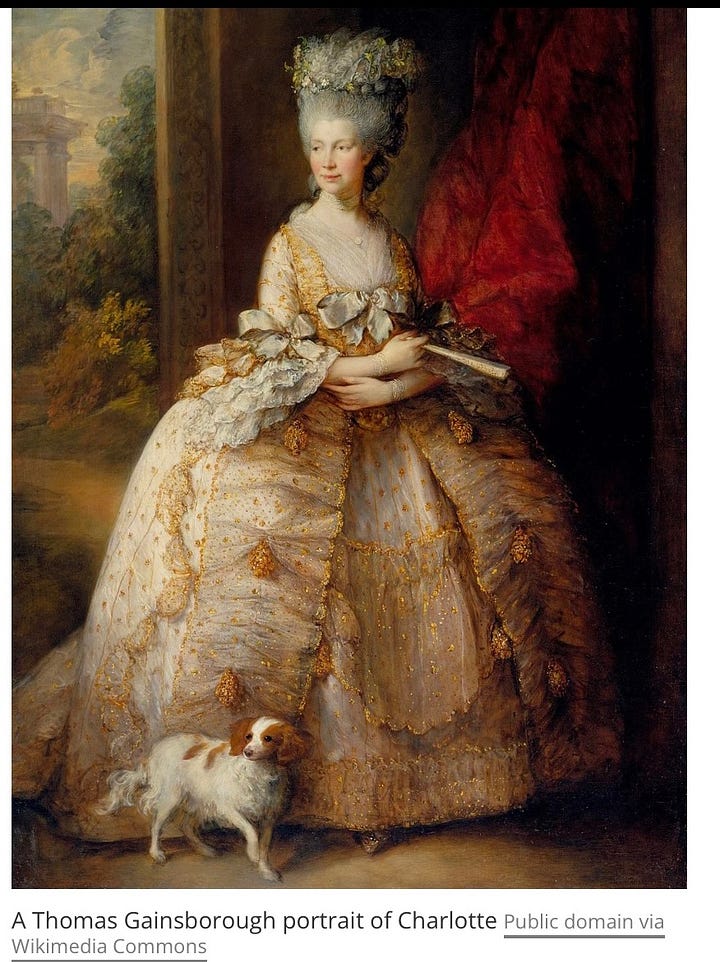
As to her “Black” features in some portraits, we can’t know how they may have signified in cultures and eras when the concept of race was not yet the great categorizer of people that it has become. And the equating of “race” and physical features, while extremely important to the Southern racist measuring skin tone against a brown paper bag outside the door of a church, hasn’t been a historical constant, let alone a biological fact. In Hitler’s Germany, it wouldn’t matter how straight your nose was or how blue your eyes were, if it could be proven that you had Jewish ancestry, you were the object of hatred and genocide (and also frequently described as “Black.”)
Historians can debate the issue. I’m more interested here in “Queen Charlotte” than Queen Charlotte. And what we do know, with certainty—because Shonda Rhimes has written her and cast her that way—is that “Queen Charlotte” is Black in the series. Both actresses who play her (India Amarteifio as young Charlotte; Golda Rosheuvel reprising her role from “Bridgerton” as the mature Queen ) are mixed-race, and although we never hear the term “Black” in any of the “Bridgerton” shows, in “Queen Charlotte” those who are some shade of brown/black (including Asians) are clearly designated as “other” to the prevailing white norm. Most often in the show, they are described as “their kind” or “our kind” (by the non-whites themselves) and before Charlotte and George mix it up, the two “kinds” lead segregated lives. There are Black aristocrats, but they don’t mix it up with the white nobility.
Charlotte, who has been imported from Germany, presents a “problem” because although her teeth are good and she has breeding hips she is, as Princess Augusta (Michelle Fairley) laments, so “very brown…You did not say that she would be that brown.” The problem gets solved—although with some resistance from the white “side” of the “ton”— by the invention of a “Great Experiment” in racial integration of the whole aristocratic population. This experiment is designed to provide a different meaning to the pair than Augusta frets about: it transforms the “problem” of a royal mixed-marriage into a royally decreed innovation. Charlotte’s skin color isn’t a liability any more; it’s all part of an inspired plan! And so, after a bit of struggle with the old ways, the ton becomes the delightfully diverse “Bridgerton” of the other two series.
“Queen Charlotte” is thus something of an origin story, not only of how the familiar characters (of the Queen, Lady Danbury, and the Bridgerton family) came to be who they are, but the town itself. And although it’s a fantasy, it’s a fantasy that brings the realities of racism into the show, and in that sense is true to history nomatter how much of the detail is fiction and how much “actually happened.” Lady Whistledown tells us very clearly in a “preface” to the series that “this is not a history lesson.” But she also says that “it’s a fiction inspired by fact.” And whatever the historical Queen Charlotte’s color or features were like, the racial “othering” depicted in the show is certainly a fact of much European (and American) history.
With “Queen Charlotte” as the backstory to the fictional Bridgerton, Shonda Rhimes seems to be telling us (now that DeSantis et al are trying to write racism out of the story of America?) that the charming, optimistic fantasy-world of the original series is not enough anymore. Even if it has to be perserved and insisted on via an entertaining romance, racism must not be disappeared. The subversive play here: Through this “not history lesson” we keep a truth of history alive.1
There’s no preaching, just a multitude of both large and small details: “Make her skin lighter,” the queen mother instructs at Charlotte’s portrait sitting (Charlotte counters that it should be darker.)
From the novel based on the series (all boxed quotes are from this novel)
At the first royal ball, the two groups of lavishly adorned guests are like high-schoolers clinging to their self-segregated tables in a cafeteria—until Charlotte and George break the ice by dancing with each other. But perhaps the most poignant detail: Although Agatha (Arsema Thomas), who has been made Lady Danbury by royal decree, dreads her husband’s sexual demands and longs for the day she’ll be free of him, she is deeply sympathetic of his desire for respect, and fiercely protective of his feelings. As a man, he’s barely to be tolerated. But as a man of his “kind” she knows what insults he suffers and is his wholehearted ally. That alliance is an aspect of their relationship that I suspect every Black man and woman will recognize, and it’s quite moving
Love and Madness
Just as I’m not going to enter the debate about Charlotte’s “actual” race, I’m not going to offer a diagnosis of the famed “madness” of King George. For me, it’s a subject more for cultural analysis than diagnosis. From “hysteria” and “bad humors” to bipolar and dissociative disorders, ADHD, and “on the spectrum,” the labels, the etiologies, and the treatments of “mental illness” have mutated dramatically over the centuries. This applies to fictional characters as well as people who actually lived. In the nineteenth century, Tolstoy’s Ivan Ilych was imagined to die of a “floating kidney” or perhaps some form of tuberculosis; readers today assume he had cancer. “Fasting girls” used to be diagnosed as religiously obsessed, then “hysterical,” then victims of dysfunctional families and demanding mothers, “anorexic thinking” and “body-image disturbance syndrome.” Only recently has the medical establishment turned attention to the role of cultural images, our fat-and-fitness obsessed ideologies (and the lucrative businesses built on them) and the pressures on young women (and increasingly, young men) to be our version of “perfect.”
The 1994 film “The Madness of King George” adopted (in a postscript) the then-dominant view that George’s periodic bouts of manic hyperactivity (as well as his blue “water”) were caused by porphyria, a genetic blood disorder among whose symptoms are physical pain, insomnia, and “mental instability.” Then in 1960, two psychiatrists revised that view, speculating that his “madness”, which apparently didn’t surface until his forties, was better theorized as a species of bipolar disorder. “Queen Charlotte” makes it a life-long malady of an unspecified nature, manifesting itself in intense bouts of panic, followed by compulsive ruminations and “soothing” behaviors (gardening, science-study, and star-gazing—all of which seem to be factually based.) The show doesn’t diagnose the illness, as Corey Mylchreest, who plays George explains it, “because the story is told through the lens of Charlotte's perspective. And to Charlotte, it's a mystery. Also, retrospectively, in real life, to us, it's a mystery. We will never be able to diagnose George now — we can have a gander, we can have a guess, but we can't, for sure, say anything.”
In the show, George’s panics are usually triggered by intrusive anxieties over the pressures of responsibility for a kingdom, which his mother has impressed on him from childhood:
There’s also a hint of what I think of as “Henry VIII syndrome” (and I imagine as applying to Putin and Trump as well!): When you get nothing but supplication from others your entire life, there’s no “training” in recognizing the boundaries of your own ego, the subjectivity of others, or the limits imposed by material reality. George says as much to Charlotte, after she confronts him about his absence (more about which in a moment) from her life, and he tries to explain why he spends so much time looking at the heavens:
“In this world we live in, where I'm given so much power and attention, it is good to remember I'm a bit of dust. I'm a small dot in the universe. It keeps one humble. Being king is a... hazard. My world has been made to revolve around me, and... It has made me... selfish.”
But this King George (Corey Mylchreest), unlike those other guys, is no tyrant.
He’s affectionate and tender-hearted, a wonderful lover, and although he has moments of kingly bullying, they emerge out of panic and confusion, and he immediately regrets them. He’s also physically swoon-worthy—we’re talking a McDreamy here, especially when he’s a shirtless “Gardener George”—and for Charlotte, who has been dreading the arranged marriage, it’s love at first sight. Apparently it is for him too (her “brown-ness” doesn’t seem to bother him at all.) So when, the night after the wedding, he drops Charlotte off at her separate residence of Buckingham house (later to become Buckingham Palace) and retires on his own to Kew, it’s as startling and perplexing to the viewer as it is to Charlotte. (Swept up by the romance and his sexual appeal, I had completely forgotten that this was “mad” King George.) Charlotte endures endless solitary meals until she finally loses patience and confronts George in his observatory, where’s he’s hidden himself away, studying the transit of the planet Venus. But he sends her away again, and Charlotte continues to stew, imagining she has done something wrong.
Eventually, George does come out of his observatory, and they have fantasy-perfect sex (Lady Danbury has taught Charlotte about what to expect, and George has reassured her that the “part where my head hits the wall over and over” need not be a part of it.) But an overheard and misunderstood conversation between the George and his mother sends Charlotte running away, and George, distraught, feels the familiar signs of panic coming on. The weird doctor Monro is summoned, and unknown to Charlotte, George is subjected to a sadistic regime (some of which is historically probable) of physical restraints, ice-baths, beatings, and other forms of torture meant to extract submission and self-control. The theory: Before he can govern the nation, he has to learn to govern himself. In between treatments, there’s passionate sex (on even days) between Charlotte and George, which they each pretend is a “performance” done out of the “duty” to get Charlotte with child. But, as in the lexicon of a forties RomCom in which professed hatred between couples signals that they can’t live without each other, it’s obvious that they are in love.
And although there are ups and downs to the relationship, occasioned by George’s absences when, desiring to protect Charlotte, he isolates himself again, thee couple stay in love even after Charlotte discovers that he is ill. That discovery doesn’t happen until the end of episode three, when she is awoken in the middle of the night to find George mumbling incoherently about Venus and drawing strange shapes on the bedroom wall. She follows him into the garden, where he is talking to the planet Venus:
George: Hello, Venus!
Charlotte: George. George. Farmer George.
George ( gasps at Charlotte being there ) It is Venus. Say hello.
Charlotte: No. I am Venus. Right here. I am Venus.
George: You are Venus?
Charlotte: Yes.
George ( chuckling ) You are Venus?
Charlotte: Yes. And Venus is going inside. You need to come with me.
George:. I thought...I thought you were in the sky.
Charlotte: I was in the sky, but now I am going inside. Into Buckingham House. Here. Here. Come on.
George: Venus... is indoors.
Charlotte: Venus is indoors. With you. She is with you.
Don’t ask how Charlotte, who is just seventeen, came to be so wise about how to tend to a person who is having a meltdown. It’s a feature of her personality, as drawn by Rhimes, that is surprising, endearing, and an answer to the mystery of how these two did actually remain together all their lives, sleeping in the same bed (very unusual for royals of the period), Charlotte bearing fifteen (!!!) children, thirteen of which survived to adulthood (one of them fathered the future Queen Victoria.) The answer given here may be fictional, but—like the best fictions—it gifts us with a truth more significant than mere fact. When you love someone—truly, madly, deeply—what the rest of the world might label and shun as “madness,” being inseparable from the person that one loves, is to be accepted and loved. Tended—not pathologized.
And this George is so lovable. And from what I’ve learned, from recent reading since watching the series, is that an affectionate, sweet nature appears to have been true about the actual King George—although certainly not foregrounded in the history books that emphasize his ‘madness,’ his tyranny over the colonies, and in British versions, how he “lost” America. People are never just one thing, Rhimes is telling us. Charlotte is headstrong and proud; she is also tender and compassionate. George may go a little nuts sometimes, but he is not defined by those moments. He’s also open-hearted, unhobbled by the prejudices of his time, protective of Charlotte (it’s why he stays away from her for those extended periods), an excellent gardener, and—this is a romance, after all—fanfuckingtastic in bed.
As with her treatment of race, Rhimes doesn’t hit us over the head with a sermon about “mental illness.” She lets the characters and their relationship do that work instead. She may not even have intended for any sort of message to be communicated. But just as I suspect that Lady Danbury’s protectiveness of her husband has special resonance for Black women, I believe/hope the enduring love between George and Charlotte speaks to those living with neurologically atypical partners, or those who suffer from panic, depression, OCD, or any of the many other maladies being human is prey to. I know it spoke to me.
And some other things I love about “Queen Charlotte”:
The eye-rolling that constantly passes between Agatha Danbury and her lady Coral, most often as Agatha is about to “do her duty” with her husband. Agatha and Coral may occupy different stations in life, but those covert woman-to-woman side-looks are priceless.
The relationship—from start to finish—between Brimsley and Reynolds, which literally parallels the relationship between Charlotte and George, as Brimsley is Charlotte’s chief servant and Reynolds is George’s “man.” I loved the difference in their heights. I loved their strict formality when on duty—which dissolves completely when they are off. I loved their bath-tub conversations about Charlotte and George. (They’re thinking about their charges, even while soaping each other up.) They are probably the most original, adorable gay couple I’ve seen depicted in the movies or on tv.
I loved thinking about the strangeness of how young Charlotte developed into the regal, snuff-sniffing, sometimes pompous institutionalist Queen. It isn’t explained, it’s left to our imaginations, and it’s fun to ponder the pieces of personality that are “seeds” and those that appear to be totally transformed by the years of ruling (and privately tending to George.)
I love the hair. I especially delighted in Charlotte’s hair in its “undone” state when she goes to sleep. The elaborate up-dos her ladies arrange are wigs—it would be impossible for her ladies to style her as quickly as they do before every meal. (I know from experience; I have a daughter whose hair, when not braided or pulled back in a tight pony-tail, is much like the young Charlotte’s.) But I’ve also read that the stylists made a point of weaving some of Golda Roshuevel’s real hair into her towering wigs, which delighted the actress. And the series stylists worked to represent all textures of hair. The team “relied on everything from 1,000 tiny cocktail sticks to rickrack trimming in order to achieve desired results. First the department worked in the parameters of the Regency period’s existing hair shapes (within creative reason), then incorporated centuries of Black hairstyles, from braid work to coils, to create something that, thus far, has not been represented.”
I loved the scenes between Charlotte and Lady Danbury, in which the delicate dance that’s required of a relationship with a queen is gradually replaced by a womanly friendship that is probably the most honest in the series. It’s Lady Danbury who cuts through Charlotte’s BS about her honeymoon, who teaches Charlotte about where penises go in sex, who attends the birth of her baby, who provides a haven when Charlotte runs away from Buckingham house, and who convinces Charlotte to assume the mantle of Queendom
A Final Word to Parents:
Don’t worry about the sex. Watch “Queen Charlotte” with your children. It holds life-lessons that DeSantis can’t erase with curricular white-washing, and communicates them more deftly than any pedagogical children’s book.
(Not every truth, of course. There’s no mention of the slave trade, for example, which was the source of a great deal of the wealth depicted in the series.)






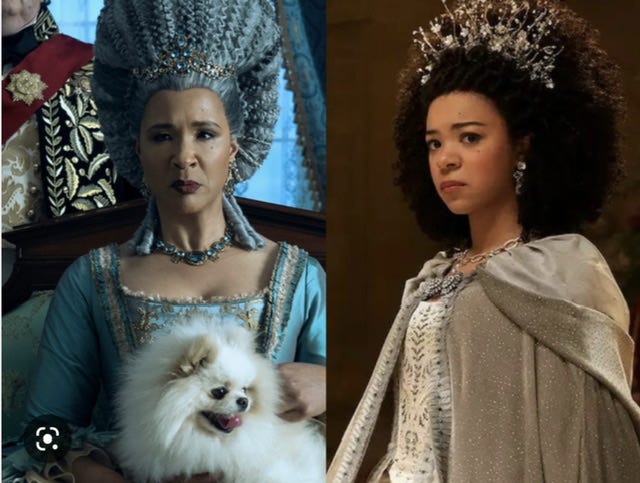
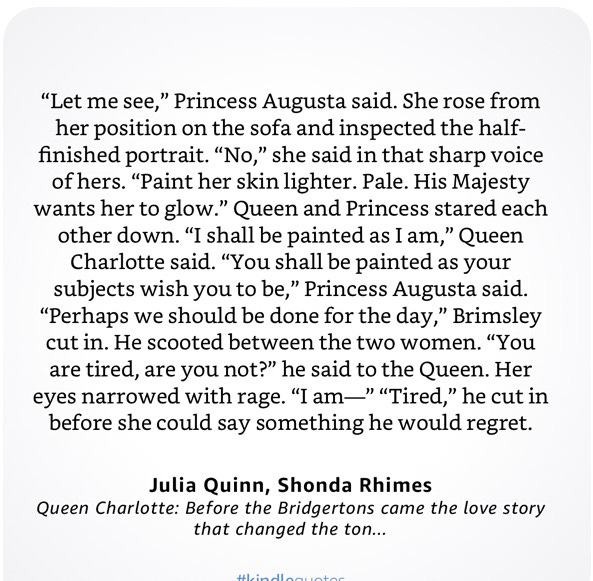
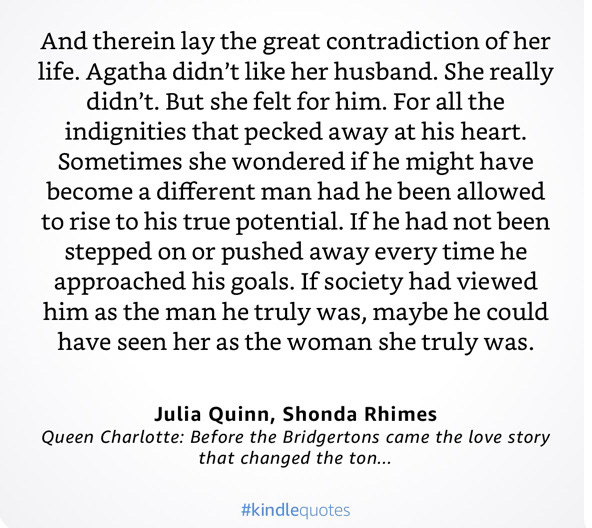

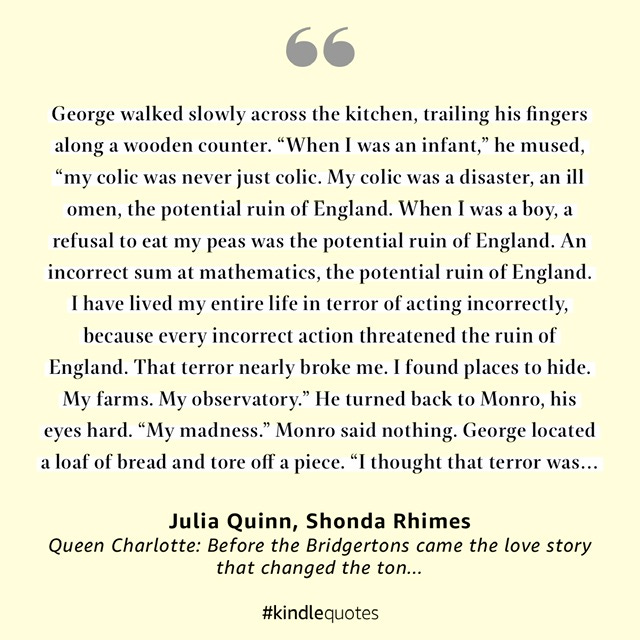

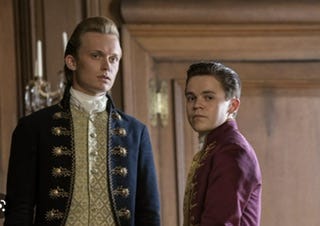
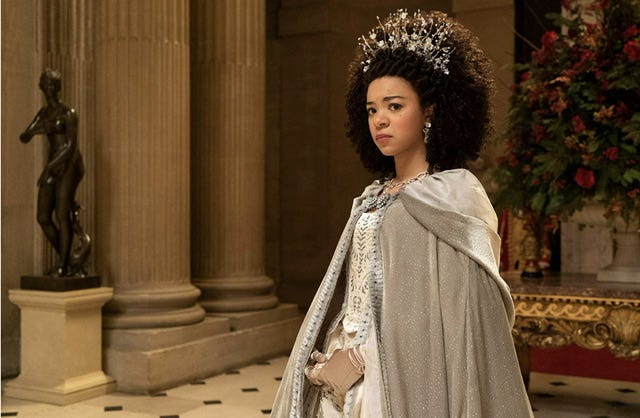

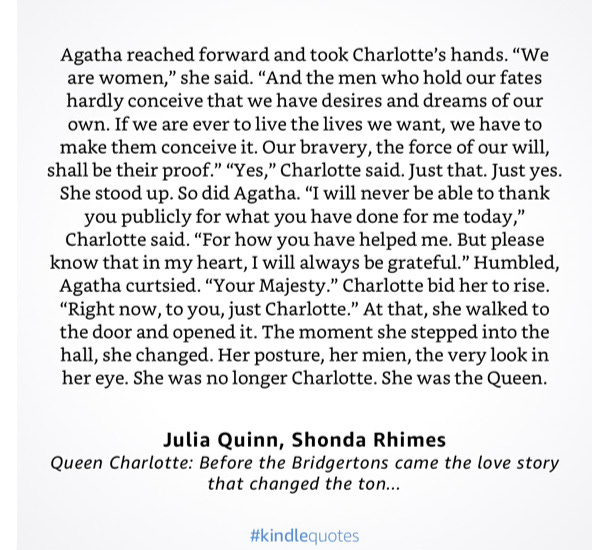
Nice article. Jenny and I are enjoying Queen Charlotte for all the reasons that you mention.
I hope this works both ways and we can start inserting Europeans and white skinned people into the sociologies, literature and histories of black ruled nations. I'm sure they will love it just as much as white people are enjoying observing the finangling and corruption of our culture.